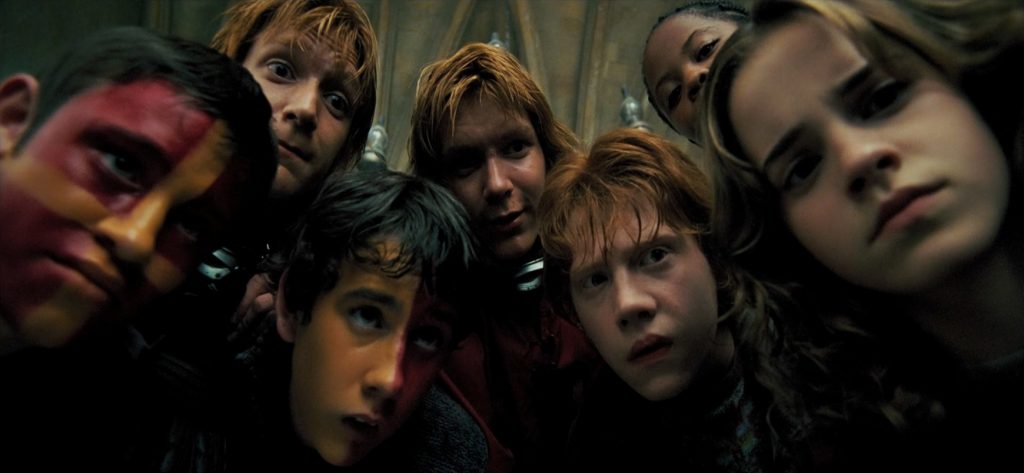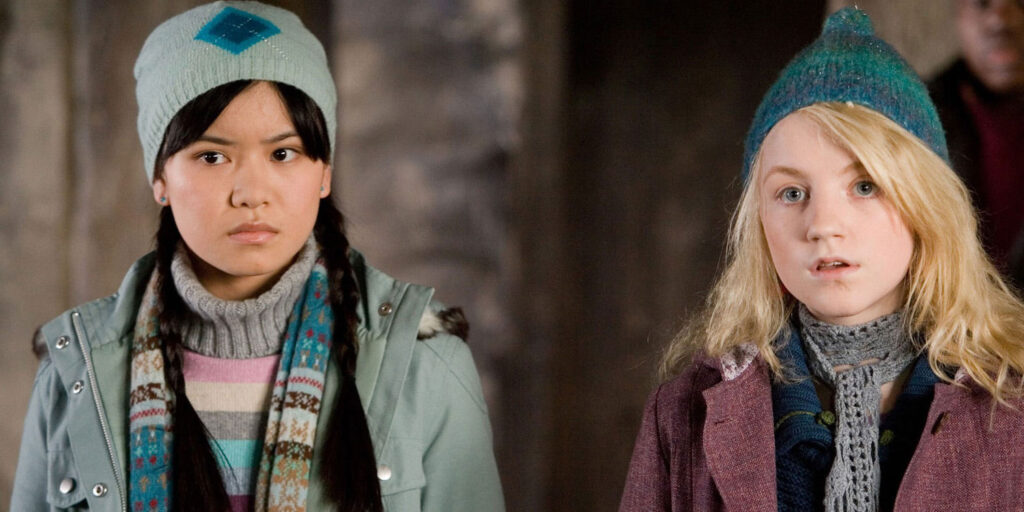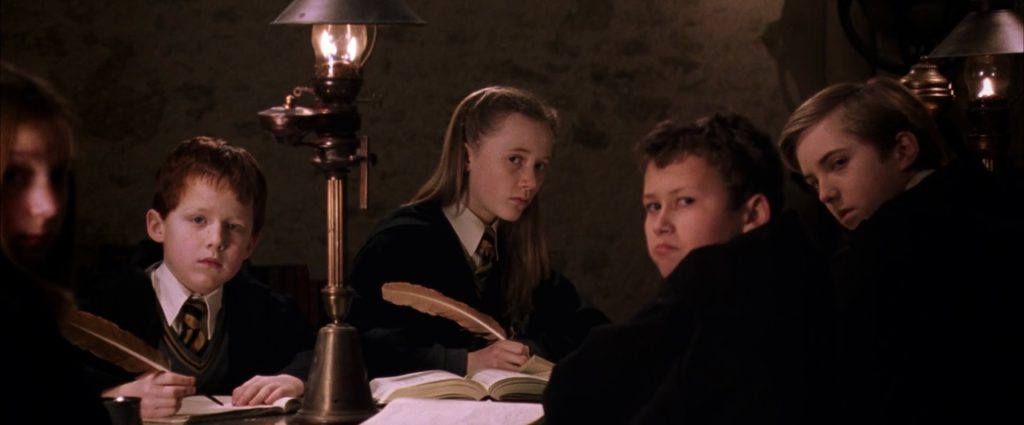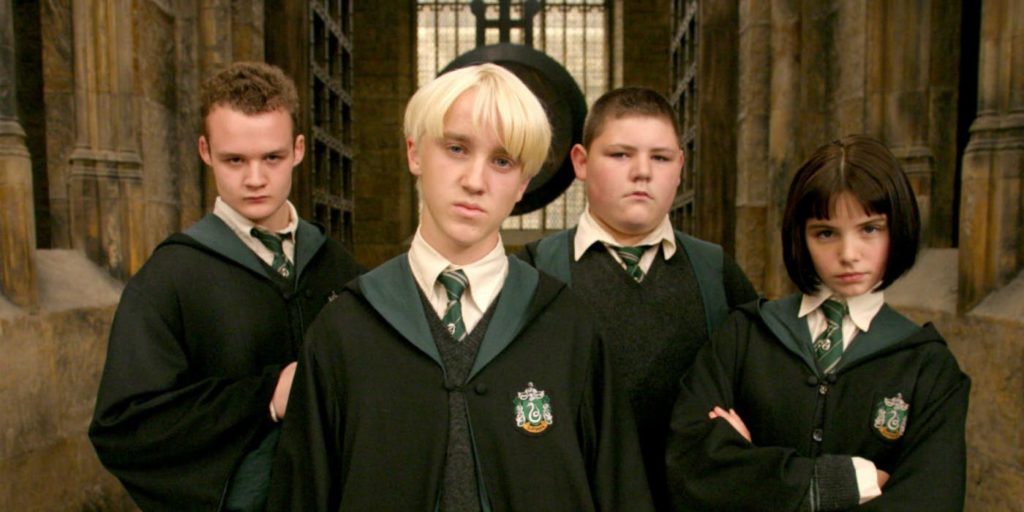Breaking Down the House Stereotypes
Why is it that so many people seem to think of themselves as the Sorting Hat, yet they can’t correctly Sort to save their lives? This isn’t the first time House misconceptions are brought up — let’s break down the many myths that are commonly believed about each House and see what a true Gryffindor, Ravenclaw, Hufflepuff, and Slytherin each look like.
Gryffindor

MISCONCEPTIONS: As Professor Dumbledore once said in the ever-so-popular A Very Potter Sequel: “Gryffindor is the House of the good guys.” Anyone and everyone that sleeps in Gryffindor Tower has an almost magical sense of what is right, is never afraid of a single thing, and loves to throw all-night-long parties. Right?
REALITY: More often than not, we will see everyday Gryffindors as our heroes. That makes sense, seeing as they have the House of courage and bravery. But Gryffindors have fears just like everyone else — though, despite these fears, they still do what they believe to be good.
Ron is an obvious arachnophobe, but that doesn’t stop him from heading into the Forbidden Forest, trembling with fear, to help save the school and prove Hagrid’s innocence. Peter Pettigrew, on the other hand, seemed to think that whoever held power was the right person to follow. He showed courage — horrible yet clear courage — when he changed camps and joined the Dark Lord; we all know how much bravery it takes to stand against your friends.
Both are Gryffindors in very different ways. Both use their courage to move on and get to where they need to go.
Ravenclaw

MISCONCEPTIONS: With their noses in their books and their hands on their quills, Ravenclaws finish their homework quicker than it takes to say Wingardium Leviosa. But don’t dare tell these intellectual types how something makes you feel. Unless it’s based in logic, Ravenclaws could never understand.
REALITY: A grave mistake was made when we started associating Ravenclaws with model students. Some of them may be, but who says the most passionate subjects are found in textbooks? Take Luna, for example. We don’t really hear much about her studies, but she is passionate about invisible creatures and mysterious monsters that no one else really seems to believe in.
Think of Trelawney, always focused on what every little sign may mean but never bothering to check if she’s correct. Think of Quirrell, who tried to find the remains of the Dark Lord simply out of curiosity. To a Ravenclaw, a feeling or intuition may be just as important as a fact. They are oddballs (like Uric the Oddball) who love to discover, learn, and invent; Ravenclaws resemble much more the crazy scientist than the respected academic.
Hufflepuff

MISCONCEPTIONS: We all know who Hufflepuffs are. They’re nice, shy, and maybe even… boring. As soon as someone is willing to help a friend or smile at a stranger, they can be nothing else than a classic ‘Puff.
REALITY: Hufflepuffs can be nice people, but never mistake them for pushovers. In fact, some of their main values seem to imply the opposite. Hard workers and big on justice, the average Hufflepuffs are out on the street, fighting against discrimination.
Look at Cedric Diggory. After seeing that he won a Quidditch match because the Dementors attacked Harry, he tried to get his win canceled. That’s more than nice — that’s fair. The same fairness can be found in Zacharias Smith, incredibly skeptical of Harry because he does not believe in giving him more praise or honor than the average student. Rather, Zacharias believes in taking him down a notch. To him, that’s what’s fair.
Hufflepuffs may often be pleasant, but that’s not their defining trait. They are just, loyal, and determined. Never confuse that with “nice.”
Slytherin

MISCONCEPTIONS: Last are Slytherins — a House of Dark wizards, the snake House is filled with blood-purity discrimination and Muggle hatred. If you ever find a Slytherin who doesn’t hate all who are different, then they’ll for sure be dark and broody.
REALITY: When your House’s founder turns out to be a huge racist, it’s no wonder that rumors start spreading about your own values, both within the House and out of it. Discriminative thoughts do seem to be more present among members of Slytherin, but this can be associated more with a hostile environment than with their inherent values.
Nothing about Slytherins’ values means they are predisposed to be evil. They are ambitious and determined people who dream big. Think of Slughorn, who always loved networking. He manipulated all around him, raising the ones he loved and helping his favorites succeed. Think of Regulus Black — once he saw the true nature of the Dark Lord, he died to end him. Regulus’s sacrifice was brave, but it mostly showed his determination to save the wizarding and Muggle worlds.
A Slytherin has a goal in mind and always moves toward it. That goal could be to rule the world, but more often than not, it’s just to cheer up a friend.
Are there any other stereotypes that you hate about your House or any characters who defy these preconceived notions? Let us know in the comments.

